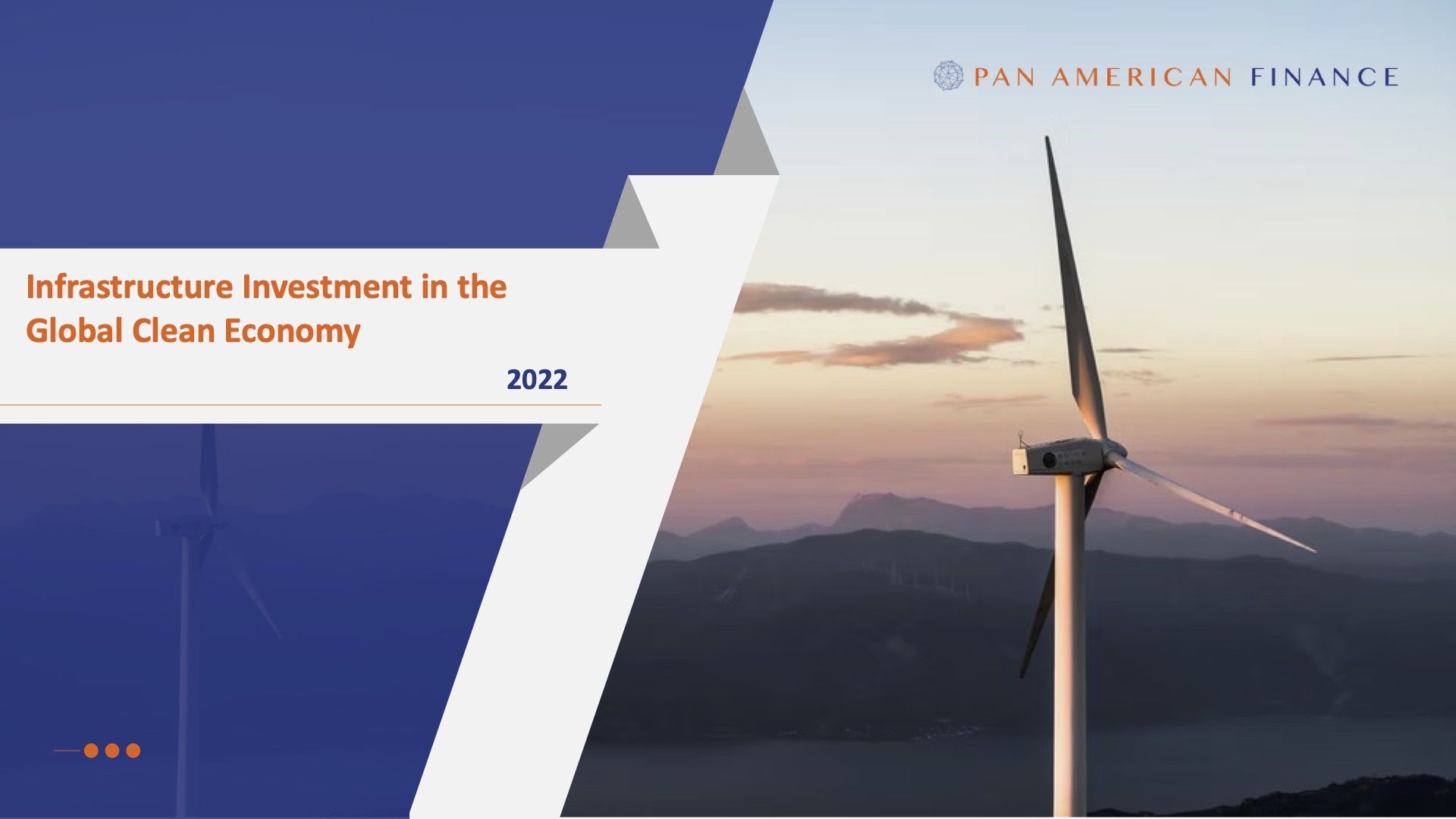PAF Global Infrastructure GP Report

About
The PAF Infrastructure Investment in the Global Clean Economy Report provides an insight into the Global Infrastructure Investment Sector’s investment in the global clean economy. The findings of the report are based on primary and secondary research conducted by Pan American Finance (“PAF”) and its research partner Alchemy Research and Analytics.
The report provides an overview of the global infrastructure investment market focusing on global and regional trends around capital raising, investment activity, exit markets, and available dry powder for further investment. It also explores the role of infrastructure investment in the global clean economy and analyses the trends in private investment in renewable energy over the years.
Major infrastructure GPs who have invested in renewable energy, or the broader clean economy have been profiled in the later part of the report. Data on the infrastructure industry has been sourced from established industry sources such as Preqin, Bain & Company, Bloomberg NEF and others. Information on Infrastructure GPs has been primarily sourced from Pitchbook and the companies’ corporate materials. This has been supplemented by news articles and reports from industry associations, trade journals and national statistical agencies.
The report is an outcome of a collaboration between PAF and its research partner Alchemy Research and Analytics. In this regard, we would like to thank the following executives for their contribution in preparing the report:
Pan American Finance
- L. Warren Pimm, Partner & Sr. Managing Director
- Ben Moody, Partner & CEO
- Ed Miller, Partner & Sr. Managing Director
- Rob Hays, Managing Director
- Pedro Obregon, Vice President
- Federico Fermin, Associate
Alchemy Research and Analytics
- Niladri Paul, CEO
- Souradeep Basu, Associate Manager
Executive Summary
Green Capex Will Be the Dominant Driver of Global Infrastructure
- Net Zero targets have emerged as a useful tool to indicate a country, company or asset manager’s commitment to climate action, uniquely focused on carbon emissions or equivalents
- Around $6.0Tn of annual investment is required in 2020s to meet Net Zero, Clean Water and Infrastructure objectives, up from legacy $3.2Tn v China, US and Europe represent more than half of required investment for Net Zero by 2050 pathway, consistent with weighting of overall emissions
- Meeting the Net Zero pathway objectives involves not only the expansion of power plant capacity, however also of transmission lines, batteries, charging infrastructure, and carbon capture/sequestration
Increasing Popularity of Infrastructure Funds
- Global infrastructure investment needs could be up to $3.7 Tn annually to keep pace with GDP growth. Broader infrastructure report from McKinsey estimates that 14% of global GDP is spent on infrastructure and real estate
- As a result, infrastructure has become one of the most highly favoured alternative asset classes by investors, because of its consistent returns (second only to private equity) in recent years and resilience to the pressure created by high asset pricing. 2019 marked the first year in which annual capital raising surpassed $100bn
- Europe-based infrastructure AUM has grown remarkably over the past five years, reaching almost €250bn as of December 2020 – a CAGR of 22% since 2015
Growing Interest in Renewable Energy
- Renewable energy infrastructure has been a major recipient of investor capital over the last few years. The sector already constitutes the largest share of the deal-making market
- Renewables-focused and mixed energy infrastructure funds outweigh the funds focused on conventional energy sources. The sector is presenting a huge opportunity to the fund managers who venture into new untapped growth markets
- Europe has been the most popular destination for investment in renewable energy infrastructure assets over the past 10 years. In terms of technology, solar PV and wind power continue to dominate new investment in renewable energy. At the same time, water treatment facilities and/or e-recycling have emerged as a key additional choice of area for investment
Pressure on Performances
- The infrastructure sector sits at a collision point of global disruptions, including shifts in capital availability, evolving social and environmental priorities, and rapid urbanisation
- The pandemic had an impact on many types of infrastructure. Traffic volumes at airports, roads, and railways plummeted, while energy consumption dropped to the point where renewables were able to provide the majority of baseload electricity in many developed countries, if only temporarily
- Opportunities abound for infrastructure investors and fund managers as the decarbonization agenda will drive projects. However, the latest generation of mega private capital funds would pose increasing pressure on smaller fund managers given that they are competing for only a fraction of total allocation space

